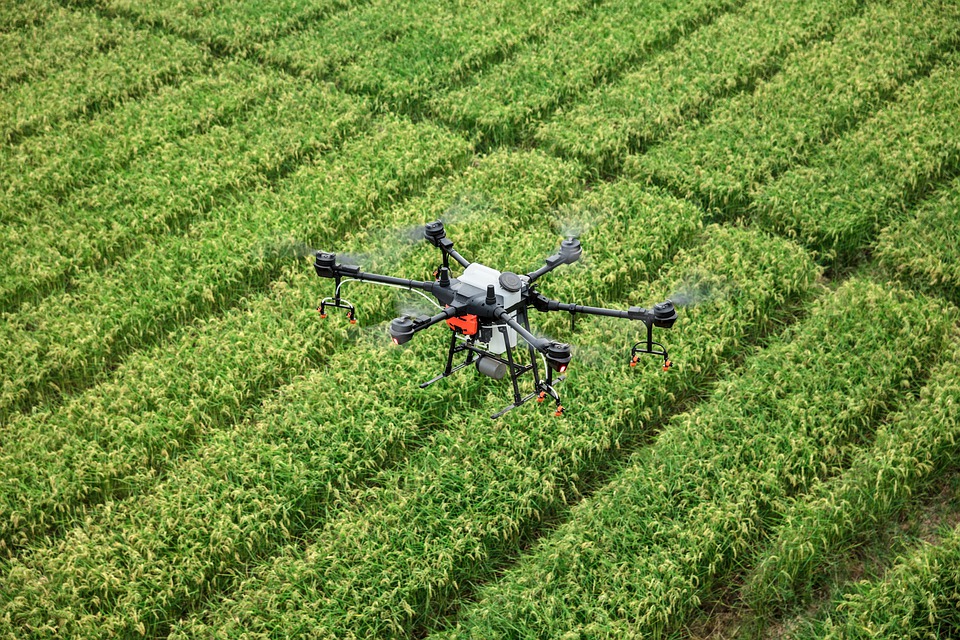The Use of Drones in Agriculture and Logistics
The Use of Drones in Agriculture and Logistics:
Introduction:
The use of drones in agriculture and logistics is a rapidly growing trend that is helping farmers and logistics companies to improve their efficiency and productivity. Drones are being used to survey crops, monitor soil conditions, and even spray pesticides, making it possible to cover large areas of land quickly and easily. They are also being used in logistics to inspect warehouses, track inventory, and even make deliveries.
The Advantages of Using Drones in Agriculture:
One of the biggest advantages of using drones in agriculture is the ability to survey large areas of land quickly and easily. Traditional methods of crop surveying, such as walking through fields or using manned aircraft, can be time-consuming and labor-intensive. Drones, on the other hand, can cover the same amount of land in a fraction of the time, providing farmers with valuable information about crop health and growth patterns.
Drones are also being used to monitor soil conditions and detect signs of disease or pests. This information can help farmers to identify potential problems early on, allowing them to take action before the damage becomes too severe.
Another advantage of using drones in agriculture is the ability to spray pesticides and fertilizers more accurately. Traditional methods of spraying can be less precise, resulting in wasted resources and potential damage to the environment. Drones, on the other hand, can be programmed to follow specific flight patterns and release chemicals only in the areas where they are needed.
The Advantages of Using Drones in Logistics – Use of Drones:
Drones are also being used in logistics to improve efficiency and reduce costs. They are being used to inspect warehouses and track inventory, making it possible to identify potential problems and take action before they become too severe.
Drones are also being used to make deliveries, particularly in remote or hard-to-reach areas. This can save logistics companies a significant amount of time and money, as they no longer have to rely on traditional delivery methods such as trucks or airplanes.
The Future of Drones in Agriculture and Logistics – Use of Drones:
The future of drones in agriculture and logistics looks bright, with many new and innovative applications being developed. One area that is likely to see significant growth is precision agriculture, which involves using drones to collect data on crop health, soil conditions, and weather patterns. This data can then be analyzed to optimize crop yields and reduce the use of resources such as water and fertilizer.
Another area where drones are likely to make a big impact is in the area of crop spraying. Drones equipped with advanced sensors and mapping technology can be programmed to fly specific flight patterns and release chemicals only in the areas where they are needed, reducing the number of chemicals used and minimizing the risk of environmental damage.
In logistics, drones are being developed to be able to carry payloads of up to several hundred pounds. This will enable them to deliver goods such as packages, medical supplies, and even emergency equipment to remote or hard-to-reach areas. Drones are also being developed to be able to navigate autonomously, making them even more efficient and reliable for logistics operations.
The Challenges of Using Drones in Agriculture and Logistics – Use of Drones:
While drones offer many advantages in agriculture and logistics, there are also a number of challenges that need to be overcome. One of the biggest challenges is the cost of the technology, as drones can be expensive to purchase and maintain. Additionally, there are regulatory challenges that need to be addressed, such as obtaining the necessary permits and adhering to safety guidelines.
Another challenge is the lack of skilled pilots and technicians. As the use of drones in agriculture and logistics becomes more widespread, there will be a need for more people with the skills and knowledge to operate and maintain them.
Finally, there are concerns about the potential negative impact of drones on privacy and security. While drones can be used to improve efficiency and productivity, they also have the potential to be used for surveillance and monitoring.
Conclusion:
The use of drones in agriculture and logistics is a rapidly growing trend that is helping farmers and logistics companies to improve their efficiency and productivity. Drones are being used to survey crops, monitor soil conditions, and even spray pesticides, making it possible to cover large areas of land quickly and easily. They are also being used in logistics to inspect warehouses, track inventory, and even make deliveries. With the increasing use of drones in agriculture and logistics, it’s important for farmers and logistics companies to understand the advantages and limitations of this technology and how to use it effectively.
However, there are also challenges that need to be overcome such as cost, regulations, and privacy concerns. Despite these challenges, the future of drones in agriculture and logistics looks bright, with many new and innovative applications being developed.


One thought on “The Use of Drones in Agriculture and Logistics”